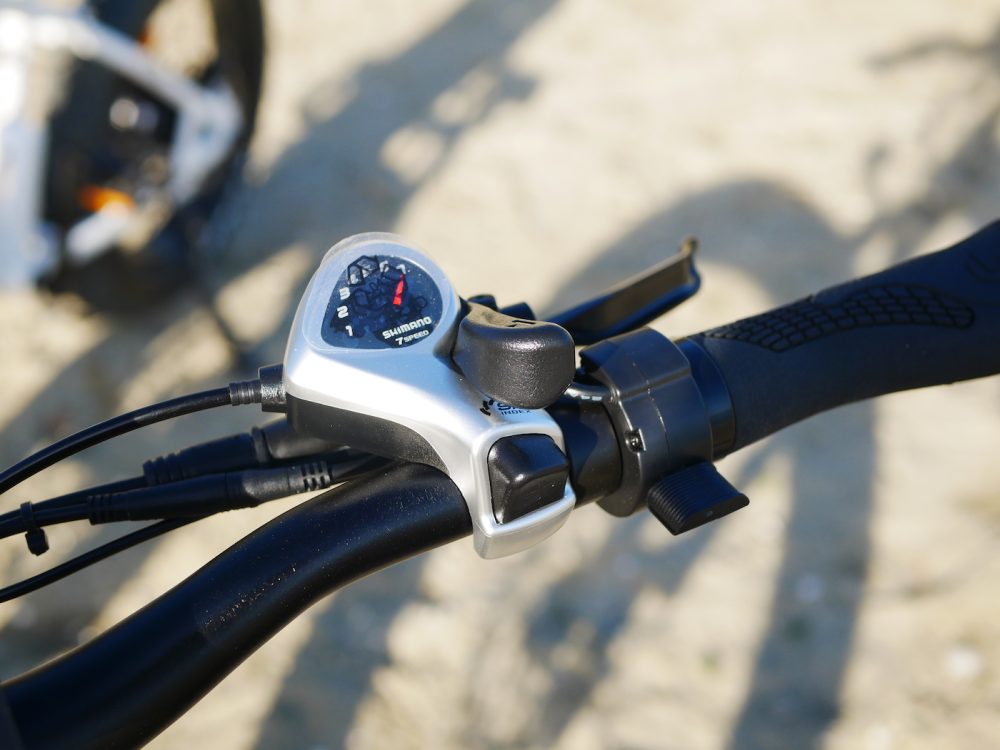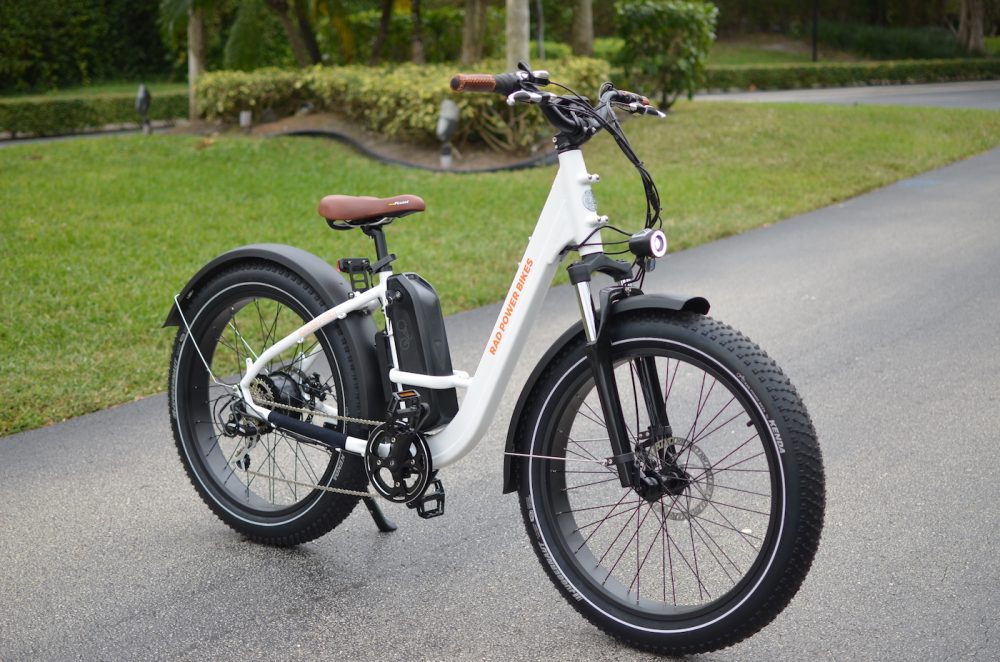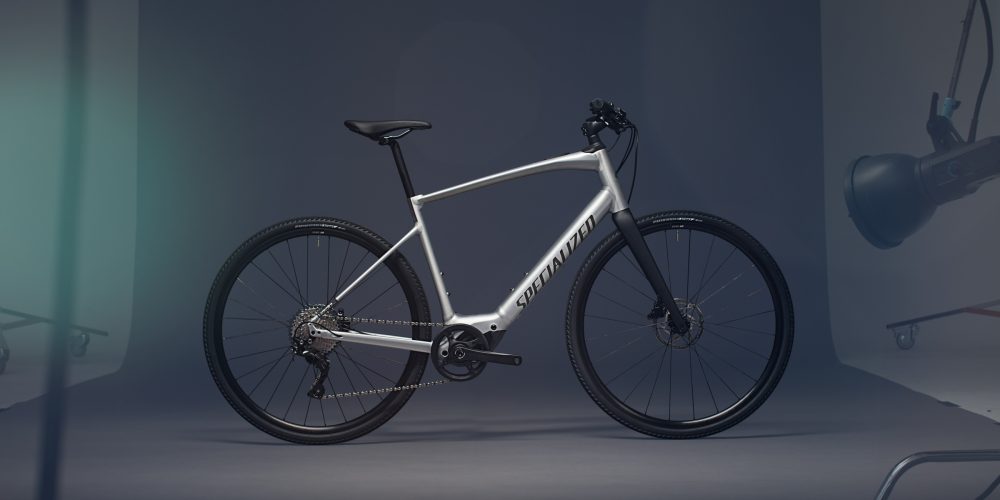One of the biggest benefits of electric bicycles is that they can help riders go farther with the same amount of leg power. But with manufacturers citing wildly different range ratings for seemingly similar e-bikes, how can you know what an e-bike’s true range is?
It’s actually easier than you’d think. And after spending more than a decade working in the electric bicycle industry, I’ve gotten decently good at it, if I may say so myself. Here are my tips to get a true, honest range rating out of an e-bike.
What are the factors in e-bike range?
First things first: one of the reasons e-bike range ratings seem to be all over the place is because they can be affected by a number of factors.
Everything from speed to rider weight to terrain style to wind conditions and even tire choice can impact an e-bike’s effective range on a single charge.
The second major factor is the presence (or absence) of a hand throttle. Most European riders won’t have to consider this since e-bike throttles aren’t common in EU countries. But for Americans and riders in other countries that allow hand throttles in addition to pedal assist, a hand throttle can be a quick way to drain battery and reduce range.

A throttle might be convenient, but it will drain battery quicker than pedal assist
How to estimate e-bike range
To determine an e-bike’s approximate range, you first need to start with the battery capacity. It is usually measured in Watt hours (Wh). Sometimes you’ll see a battery rated in volts and amp hours, such as an e-bike with a 48V 10Ah battery. To convert to Wh, simply multiply the volts by the amp hours. A 48V and 10Ah battery is therefore a 480 Wh battery.
Next, you can calculate effective range by simply dividing the watt hour capacity of the battery by an average efficiency number in Wh/mi (or Wh/km if you prefer kilometers).
This is the slightly fuzzy part of the math, since efficiency numbers will vary based on the factors listed at the start of this article. But speaking generally, I find that most 500-750W throttle e-bikes ridden at an average speed of 20 mph (32 km/h) on only slightly hilly terrain get me around 25 Wh/mi (or 15.6 Wh/km). Thus an e-bike of this style with a 480 Wh battery would provide me with around 19 miles of range (480 Wh ÷ 25 Wh/mi = 19.2 miles).
Pedal assist will always be more efficient. I find that most pedal assist e-bikes ridden around 15 to 18 mph in medium levels of pedal assist will get me around 15 Wh/mi (or 9.4 Wh/km). Thus the same 480Wh battery on a pedal assist e-bike will provide me around 32 miles of range (480 Wh ÷ 15 Wh/mi = 32 miles).
You can use the same math for various sizes of batteries to calculate an estimated range under real world conditions. However, you might want to make adjustments to the numbers to better fit your needs, as I explain next.

You can adjust these numbers to fit your specific scenario
For reference, I weigh around 155 lb (70 kg). If you’re a bigger guy, you might want to use a figure closer to 20 Wh/mi on throttle bikes, for example. Or if you’re a little slip of a thing, you might get closer to 30 Wh/mi. My wife always gets better range than I do, and the fact that she weighs 45 lb (20 kg) less than me is a big part of it. More weight means the bike has to use more energy, especially on acceleration and hill climbing.
You can also edit these numbers based on terrain. I usually ride in only slightly hilly terrain. If you’re riding around on a pancake, you can use slightly better efficiency numbers. If you’re climbing bigger hills, you’ll want to use slightly worse efficiency numbers.
But for starters, 25 Wh/mi on throttle e-bikes and 15 Wh/mi on pedal assist e-bikes is a good place to begin for a reasonable range estimate.

What if I’m a really strong pedaler?
I’ve got you strong pedalers covered too!
I usually ride around with a mid-level pedal assist mode selected, which is why I get around 15 Wh/mi on most pedal assist e-bikes. That’s a solid figure for me when I’m commuting or running errands. At those times, I’m certainly using my legs to add assistance but I’m not going nuts with the fitness.
However, when I really want to get some exercise, I stick to pedal assist Level 1 and the efficiency can often skyrocket. I recently documented a 29 mile (47 km) e-bike ride I performed where I used only 90 Wh of energy by remaining in Level 1 pedal assist as much as I could. That worked out to a crazy 3.1 Wh/mi!
I was pretty much dead after that ride, so I wouldn’t recommend riding at that level every day unless you’re a very fit cyclist (I’m not), but it was a great experiment to see what can happen when you push yourself and your bike to the limit.

What about extreme range ratings on e-bikes? Are those true?
We can use these equations to test out some examples of ultra high-range e-bikes to see if the manufacturers are being realistic.
The Specialized Turbo Vado SL e-bike was recently released and came with an 80 mile range rating from its 320 Wh internal battery or 120 miles with an extra 160 Wh booster battery.
At my normal efficiency of 15 Wh/mi with medium pedal assist, that bike would likely take me around 21 miles with its built-in battery or 32 miles with its booster battery. Realistically though, the narrower tires, lower weight and higher efficiency of that bike will likely result in a bit better range than that, as I’ll be riding more efficiently than I do on most of my cheaper pedal assist e-bikes.
But if I drop it into the lowest pedal assist mode and get closer to my 3.1 Wh/mi efficiency when I’m really pedaling hard on that bike, that would equate to a range of just over 100 miles on the internal battery!

Obviously that’s on a sweat-soaked multi-hour fitness ride, but you get the point. By adding more of your own pedal power and using lower pedal assist modes, the range of an e-bike can be drastically increased, which is where manufacturers often get these lofty range figures.
Ultimately, most people aren’t going to ever hit efficiencies below 5 Wh/mi, unless they are really pushing it hard and getting a serious workout. For daily riding, 25 Wh/mi on throttle-only riding and 15 Wh/mi on modest pedal assist riding are both good figures for real world range estimates.
Have you done your own range testing? I’d love to hear about your experiences – let me know in the comments section below!
FTC: We use income earning auto affiliate links. More.
Subscribe to Electrek on YouTube for exclusive videos and subscribe to the podcast.
"electric" - Google News
June 12, 2020 at 04:03PM
https://ift.tt/3cTBnhV
The truth: How far can an electric bicycle really go on a single charge? - Electrek
"electric" - Google News
https://ift.tt/2yk35WT
https://ift.tt/2YsSbsy
Bagikan Berita Ini














0 Response to "The truth: How far can an electric bicycle really go on a single charge? - Electrek"
Post a Comment